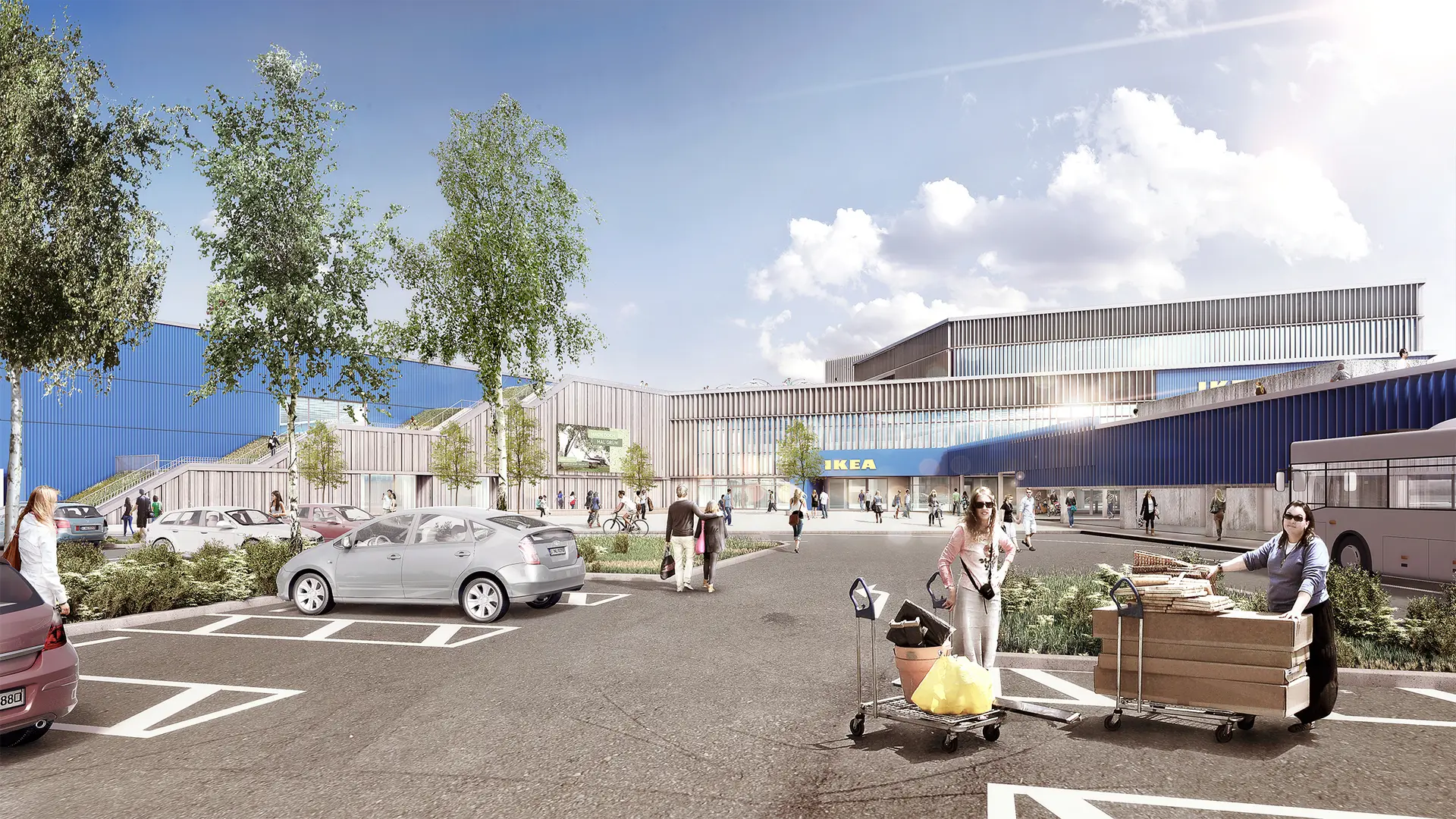Breaking out of the blue IKEA box

With IKEA’s Kaarst Store, we saw an opportunity not just to design a new store, but to introduce a paradigm shift to a well-oiled machine.
When Henning Larsen was asked to design a new store for Ikea in 2013, we started with a very simple focus: to introduce actionable sustainable building strategies to their famous warehouses. We started by developing a design guide for all IKEA’s future stores, laying out how and with what tools they could embed sustainable strategies in their design concept. This involved extensive research, testing, and discussion. How might the introduction of daylight lessen the building’s energy use, and how to go about bringing daylight into even the deepest interior spaces? What materials could be specified, used, and maintained to reduce the environmental impact of the building? And how could all these elements be exemplified in the architecture itself?
IKEA’s goals were, and are, ambitious. They have committed to not just sustainable materials, production, and disposal for the items on the shelves, but to a net-zero body of buildings. By 2020, they hope that all new IKEA buildings will produce as much energy as they consume. To help them set and reach this standard was a lofty and exciting goal for us.
The first step was to flip the spatial script. Rather than laying out the circulation first and arraying the floor space around it, the mass was broken up into digestible modules that could be organized and connected independently of each other. In the Kaarst scheme, these modules are joined or pulled apart as needed to introduce natural light into the spaces that would have rarely seen them – namely, the display and warehouse sections. Introducing natural light may seem like a small thing, but the reduction in energy use is significant.
Within the modules, it’s down to the details of daily life. In the corners where daylight can’t reach, LEDs do the job. Waste is sorted into 20 different categories in an effort to recycle as much and as specifically as possible. Rainwater collected on the roof is redirected for use in sanitary facilities below; wasted water from the sinks is sanitized and reused in the toilets. Those with electric cars can recharge in designated spaces in the carpark, but connection to a cycle path network and a shuttle service to the nearby train station offer even lower-impact options. Collective solutions made even stronger as they work in concert with each other.
This culminates in the green roof terrace that is open for all to enjoy. Embedded within the building itself, and accessible by a large stair that runs parallel to the entry, the park gives visitors an open space to play and relax. The accessible area is spread over multiple levels, connected by stairs, ramps, and even slides. Visitors to the park might also catch a glimpse of the banks of photovoltaic panels mounted on the other rooftops. As the shoppers recharge in the rooftop greenery, they can watch the building do just the same.



